Buick Caballero (1957) Review
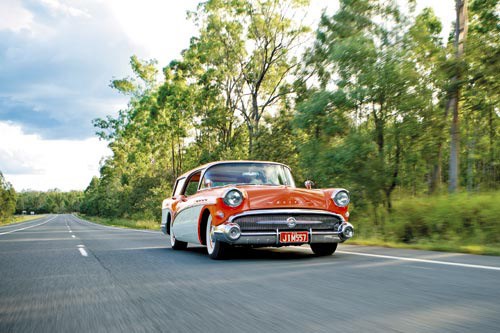 Buick Caballero
Buick Caballero

 Buick Caballero
Buick Caballero

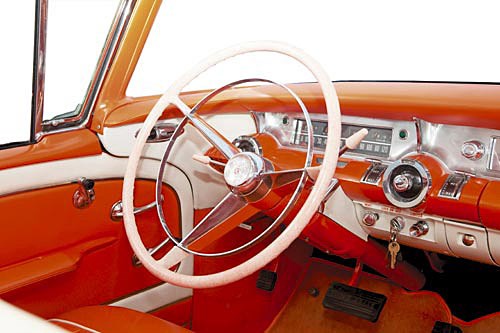 Buick Caballero
Buick Caballero

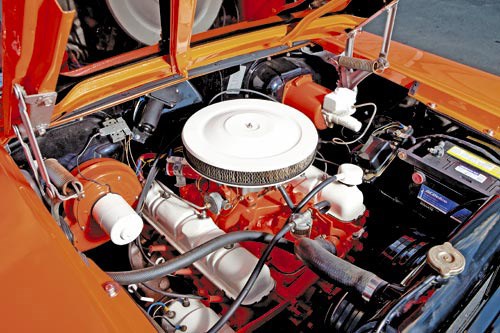 Buick Caballero
Buick Caballero

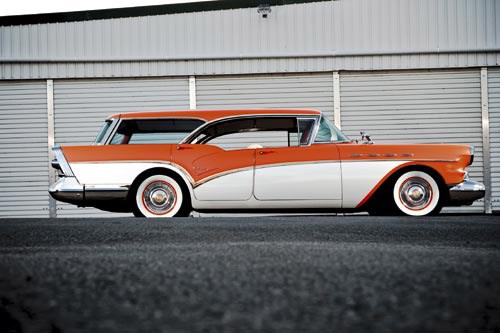 Buick Caballero
Buick Caballero

 Buick Caballero
Buick Caballero
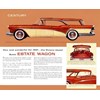

|
|
Buick Caballero
|

|
|
Buick Caballero
|

|
|
Buick Caballero
|

|
|
Buick Caballero
|

|
|
Buick Caballero
|

|
|
Buick Caballero
|
Classic metal: Buick Caballero. This rare sports wagon is a head-turner

|
|
Buick Caballero
|
Buick Caballero
Coming from what could be considered the glory days of US automotive design, the 1957 Buick Caballero and its sister, Oldsmobile Fiesta, were the first GM wagon designs to feature the 'pillarless hardtop' look that proved so popular on sedans and coupes of the era.
The essence of late-50s and very early-60s US automotive design was all about flashy fins and chromium excess that, while perceived as somewhat gaudy at the time, has transcended the trends of subsequent decades to become as much a part of US iconography as canned laughter sitcoms and Route 66.
Cars like the '57 Chevy 210 coupe, innumerable Cadillacs and any of Virgil Exner's fabulous Chrysler, Plymouth and DeSoto models testify to the lasting impression the designs of this period made around the world.
But while sedans and coupes of this era were increasingly futuristic in design, station wagons, for the most part, remained the utilitarian workhorse that shunned style for sensibility.
The Caballero was different. It stirred the pot by transferring popular styling cues of sedans and coupes onto a wagon body, with wild chrome flashes and, of course, the breezy pillarless architecture.
GM had previously dabbled with the 'cool wagon' theme with the 1955-57 Chevy Nomad and Pontiac Safari two-door wagons to try and tap into the surf culture of the day, but the Caballero was pitched at a more affluent market. Like its GM cousins, however, it was destined to fail.
Buick's 1957 wagon range comprised the flagship Century Caballero (Spanish for gentleman) and the Special Riviera Estate models, the differences being the proliferation of chrome body mouldings and Dynaflow two-speed automatic as standard on the Caballero, as well as a more luxurious interior.
Featuring a 122-inch (3.1-metre) wheelbase gifted from the 1954-56 Buick model line, the GM 'B-body' on which the Caballero sat was shared across the 'smaller' Buick line (the larger Super and Roadmaster models had a 3.32-metre wheelbase) and with Oldsmobile.
Under the bonnet the Caballero sported a 364ci (6.0-litre) V8 coupled to the Dynaflow transmission, itself an adventurous design (see p.101).
Buick claimed 300hp (224kW) thanks to a four-barrel carburettor and 10.0:1 compression, with enough torque (542Nm) to hurl the Caballero's 2150kg body to 100km/h in around 10 seconds.
While the wagons were certainly stylish with the 'sweepspear' chrome trim running front to rear, accentuating the two-tone colour scheme, production only lasted two years from 1957-58.
Buick production numbers had been on the decline for several years with the company falling from third largest US car maker in 1955, when some 730,000 cars rolled off the production line, to seventh in 1958 when just over 240,000 examples left showroom floors. It was Buick's lowest ebb since the end of WWII.
The state of the US economy, as well as negative public reaction to both falling Buick build quality and the incredibly smooth, but underdone, Dynaflow Triple Turbine automatic transmission of 1958 (referred to as the Dyna-slush by some) led to these disappointing sales figures.
Indeed, only 10,168 Caballeros were produced in 1957 - far from the stellar heights expected by the GM board.
The attractive styling of the 1957 car gave way to the garish '58 model (critics labelled the car the height of chrome excess), which featured a vulgar chrome flash, 180cm long by 30cm high, from the middle of the rear doors to the back of the car. The public literally didn't buy the new look and only 4456 were produced.
It proved a sour note to end on as the floundering company made a sink-or-swim bid in 1959 - reinventing itself right down to the model names, in the process doing away with the Caballero and the pillarless wagon idea altogether.
All of this history adds up to the fact that there aren't that many Caballeros roaming the streets these days, so putting a price on a car like this is difficult.
That being said, a 1957 Caballero fetched a remarkable US$93,500 (A$86,500) at RM Auctions in 2007.
Impressive numbers then but when you consider that a professional restoration may cost the thick end of $200,000, a fully sorted car seems cheap by comparison and certainly more desirable than a 'bargain' barn find.
SPECIFICATIONS
1957 BUICK Caballero
ENGINE: 5965cc V8, OHV, 16v
POWER: 224kW @ 4600rpm
TORQUE: 542Nm @ 3200rpm
WEIGHT: 2150kg*
GEARBOX: 2-speed automatic
0-100km/h: 10.5sec*
TOP SPEED: 161km/h*
PRICE: $86,500 (at auction 2007)
*estimated
THE DYNAFLOW TRANS
The Buick Dynaflow transmission dates from 1948 and is basically a version of what we know today as a Constantly Variable Transmission (CVT) often found on hybrid and relatively small-engined cars.
While the idea wasn't new (Leonardo Da Vinci first drew the concept of a CVT in 1490), the difference with the Buick Variable Pitch model made available from 1955 (and standard on the '57 Caballero) was that the stator blades could be angled, like in a propeller aircraft, to provide different 'ratios' for overtaking or cruising.
With the blades in the higher position, the torque multiplication is greater, and is like kicking down a gear in a conventional auto transmission.
With the stator blades in the lower position, the 'ratio' falls to allow economical highway cruising. Clever stuff.
Unique Cars magazine Value Guides
Sell your car for free right here
Get your monthly fix of news, reviews and stories on the greatest cars and minds in the automotive world.
Subscribe

.jpg)


.jpg)









